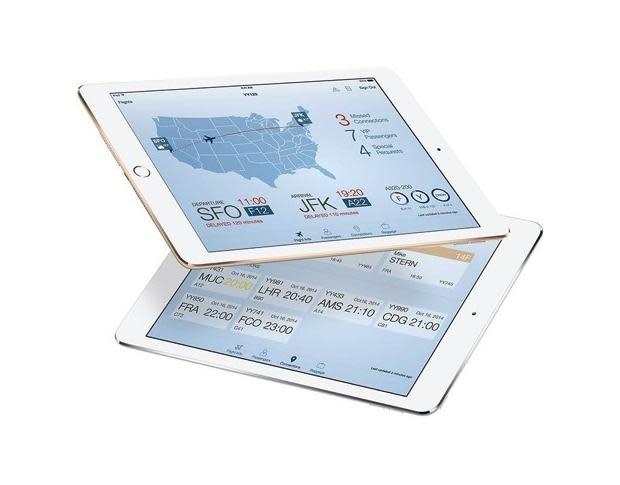IBM's Enterprise Mobile head shares more about new iOS apps

Apple and IBM unveiled 10 enterprise iOS apps last week, all of which promise to provide great utility to their verticals, including airlines, telecom, banks, and more.
Over the next year, the two companies plan to launch more than 100 apps in total, helping solve problems for IBM's enterprise clients. I spoke to Mike Gilfix, IBM's director of Enterprise Mobile for MobileFirst products, to learn more about how the apps were built and what's to come.
The apps, which have a laser-like focus on solving a particular problem that each industry might have -- for example, an app to help commercial pilots better estimate how much fuel they'll need for a flight -- were developed with lots of cooperation from IBM's corporate clients.
"We had clients get involved early in the process," Gilfix said. "A testing board for the design process." Using 50 early adopters, foundation clients in IBM parlance, made it easier for the development teams to perfect the apps to industry pain points.
"We looked at the fundamental assumptions of how people use their tools today," Gilfix explained, to "challenge and reimagine the process" and to say "we can do better."
IBM's in-house development teams did much of the grunt work, relying on Apple both for design expertise and to show the developers how to get the most out of iOS 8.
"The unique combination here is ... industry expertise, design, back-end technology, and global scale," Gilfix said. "It would be hard pressed for competitors to do that, but the relationship we have with Apple is strengthening different areas...."
IBM isn't using any proprietary APIs in iOS 8, and so it's theoretically possible for another developer to build the same apps. However, Gilfix believes IBM's MobileFirst platform, the backend for all of these apps, gives IBM unique abilities for its apps that would be difficult to replicate anywhere else.
Apps are 70% standard, with the remaining 30% customized for each client's needs. The business model is subscription-based, with a per-device / per-month charge, plus some one-time integration charges. Subscriptions include updates to the software for new iOS updates and access to IBM's back-end infrastructure.
"IBM works very closely with Apple, not just on the design side but the engineering side," explained Gilfix. "As we go thorugh planning phases, future releases, etc., we can anticipate what we need to do for the global scale."
The MobileFirst infrastructure adds a lot of significant features, including integration with existing security infrastructure, single sign on, and more. Apps can be developed to download and sync miniature versions of databases locally for offline connectivity, then upload and resync when connectivity is reestablished. Being able to work offline is essential for field technicians with power and telecom companies, for example, who could be working in very remote areas but still need to take data with them, and it's a tricky programming task.
"When they are driving, get rerouted, or jobs change, they need to know about updates," Gilfix said. "You want an application that automatically syncs. Goes offline, have information, and update when they come back. Building that as a developer is quite challenging, and using our data technologies to sync into the app has the whole process taken care of."
Officially, IBM is saying that it will launch "more than 100" apps, but Gilfix said IBM is "using this to uncover the next generation of opportunity in the marketplace."
Looking at the list of apps announced thus far, it's easy to see just how much opportunity there is for custom, high-quality apps to solve very specific problems for large companies -- especially in cases where it might not be worth it for a company to develop an app in-house, but it makes a lot more sense for IBM to build and sell it to a number of different clients.
"We created a team to build these applications... a mixture of deep industry experts at IBM that understand business problems, current pains, needs of the industry," said Gilfix. "We coupled that with a design team staffed from Apple and IBM. [They] brought their designers to the table, [and] it's a great learning process."
If these first 10 apps are any indication of what's to come, the Apple/IBM partnership is going to be a grand slam. What are your thoughts about the Apple and IBM partnership?


